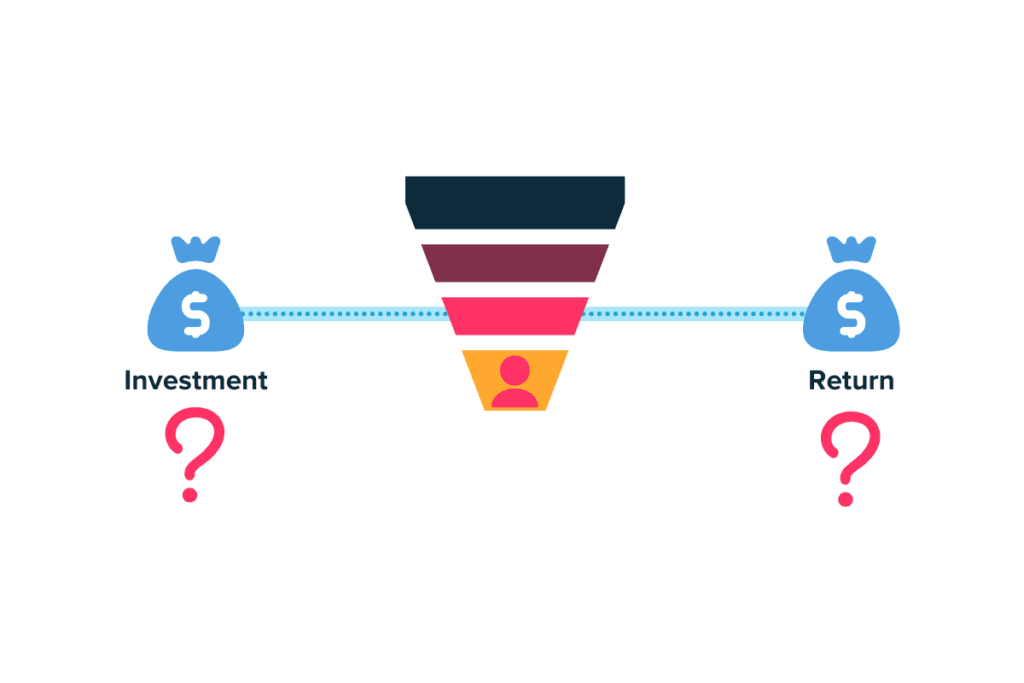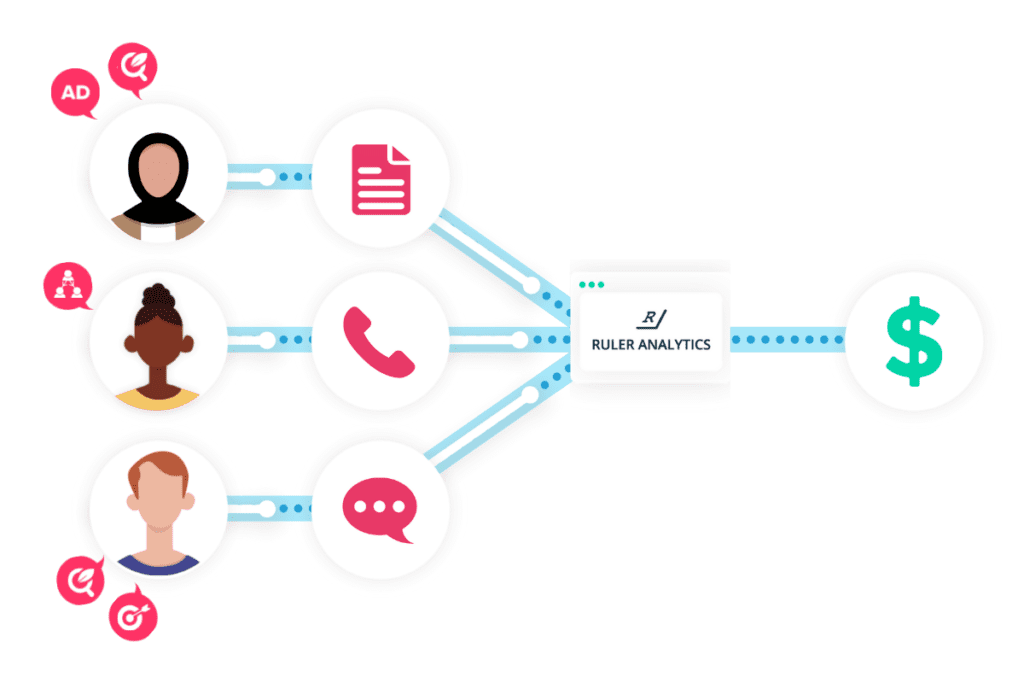Ever heard of pipeline marketing? This conversion-focused marketing strategy can help you focus on revenue, as opposed to lead generation.
It feels like every week, there’s a new marketing term to learn. But don’t worry, we’re here to help.
Pipeline marketing is a new term for marketers looking to move away from endless leads that aren’t ticking boxes when it comes to quality.
In this blog, we’ll go through:
So, let’s dig in.
Pipeline marketing is the evolution of lead generation. It’s a strategy where the focus is placed on converting customers as opposed to just generating more leads.
Traditionally, sales and marketing teams sit separately despite having the same overall aim of growing revenue.
However, with sales and marketing using different processes, targets and metrics, it quickly becomes difficult for teams to stay aligned.
Related: How to align your sales and marketing teams
Pipeline marketing allows sales and marketing teams to converge their efforts and focus on what really matters: revenue.
Historically, marketing and sales teams sit separately.
Marketing has a funnel for driving leads. It starts at the awareness stage and ends when a visitor converts into a lead. That’s when the sales funnel kicks in. And it ends when a lead converts into a deal.

However, using this practice is outdated and limiting.
Think about it like this.
Marketing could drive 500 leads. But sales might only convert 10 of them because the rest are low-quality leads. Who’s fault is this?
Well, nobodies. Marketing is trying to drive more leads and sales are trying to convert them.
Pipeline marketing aims to eliminate the disconnect between both funnels by combining them.
The power of pipeline marketing comes from its ability to unite sales and marketing. Pipeline marketing allows you to directly connect your marketing efforts to your gained revenue.
According to Hubspot, nurturing leads can increase sales by more than 20 percent, while a massive 80 percent of marketers describe their lead-generation strategies as only somewhat effective.
So, how can marketers use pipeline marketing to increase sales and revenue?
Essentially, pipeline marketing allows teams to focus on nurturing qualified leads, as opposed to constantly outreaching for mass, and potentially low-quality leads.
Of course, this may sound counter-intuitive, but remember, a lead has no value unless it’s going to close into revenue.
Ok so we’re getting to grips with why pipeline marketing is generally a better model than two separate funnels.
But just to break it down further, we’ve explored some of the key reasons why pipeline marketing is so beneficial.
You’re likely encountering issues using a typical marketing funnel.
Ok, so you can drive 500 new leads a month. How much revenue do they convert into? And how much are you investing to drive those 500 leads?

All of this data matters.
And while lead generation is important for marketing, it’s not the be all and end all.
After all, it’s better to get fewer, high-quality leads than lots of low-quality leads.
Cost per lead is defined as the cost taken to acquire a new lead. Whereas cost per opportunity is the cost required to acquire a new closed customer.
You can feel where we’re going with this. Cost per opportunity is a better metric for many reasons. And, with pipeline marketing, you can focus on that, rather than lead generation.
Ok, cost per lead is measurable too. But, and it’s a big but, what’s the point of accounting for leads that don’t convert?While it might cost you £1 per lead, what if your conversion rate from lead to opportunity is really low?That budget you’re spending to get a low cost per lead is still wasted. By focusing on cost per opportunity, you can see how much actual impact you’re having.
Cost per lead is actionable in the sense that you can use it to optimise your marketing to drive more leads of the same quality. But if they’re low quality, what’s the point?You’ll just be wasting your sales team’s time with poor leads that will never convert.By focusing on cost per opportunity, you can see which channels and campaigns are causing a direct impact on your bottom line.
One major hurdle in marketing is proper tracking. Without it, you’ll struggle to link new leads back to your marketing.

It leaves you reporting on stats like clicks and impressions. Imagine how much better it would be if you could report on how much revenue your marketing was driving. If you don’t work in eCommerce, then you’re going to struggle to do that.
Pipeline marketing can allow you to report back on the one metric that matters: revenue.
Don’t get us wrong, lead generation is important. But when you’re optimising your marketing for leads, you’re not going to see results.
By using revenue as your main metric, you can optimise for what you know will bring in more customers, not just leads.
It means less time wasted by sales on low-quality leads and more budget for marketing to scale their impact. So, you’ll be able to concentrate on the bottom of the funnel, as opposed to driving more and more leads into the top. Essentially, you’re trying to make the most of the leads you already have.
Sometimes a lead comes in and a sales rep will pursue them for three to six months. They might never convert. They could convert one year later.
✏️ Note
When surveyed, we found that 52% of companies reported they have sales cycles ranging between one to three months, while 19% have sales cycles greater than four months long. Here are some tips on how to shorten your sales cycle.
Pipeline marketing generally means much quicker turnarounds as you’re investing into content in the middle and bottom stages of the funnel.
Instead of hounding leads with generic sales messages, you’re sending meaningful content. It shows that you understand their problems and needs and that you’re ultimately a good fit.
Marketing budget is a precious commodity. Optimising your budget can make or break your bottom line.
Now the difficult part is the lack of visibility we already mentioned. Leads come in and marketing can’t understand where they came from.
Was it that PPC advert that you set up?
Or perhaps it was via the new email campaign?
Without attribution and pipeline marketing, you’ll never know what’s working, and what isn’t.
And that means you can’t pool your budget into channels that are already working well.
Pipeline marketing and proper connection of your leads and revenue mean you bump up the campaigns, channels and keywords that are working hardest for you.
Related: Learn how Ruler attributes your revenue to your marketing
Pipeline marketing, like any good marketing strategy, starts with clearly defined goals.
Once you know what you want to achieve, you can set out how you will achieve it.
Once your main strategy for the top of the funnel is set up and running, you can leave it to run. You can then focus on driving value through the middle and bottom of the funnel.
What do you want to achieve with your marketing? “Making more money” isn’t a goal. Create measurable and actionable goals that are ambitious but still achievable.
If you’re not sure where to start, then look backwards.
How many sales have you generated in the last six months? How many new leads were created within that time frame?
You might see you’ve only converted 15% of your new leads, which leaves a huge opportunity to convert later down the funnel. That’s exactly how pipeline marketing can help.
Ok, now you know what you want to achieve. So what data do you have access to? If you can’t clearly see how much revenue marketing is generating, you have an issue.
Marketing attribution software allows you to connect data from your website, CRM and marketing tools. So you’ll get one clear view (in real time) of which marketing channels are influencing new leads, and new sales.
Ok, so now you know what you want to achieve, how are you going to do it? With your data in place, you can clearly evidence what’s working and what isn’t.
Look for opportunities to grow your revenue.
If you end up using a tool like Ruler, look at the source report to see which channels are driving the most revenue. Take time to explore your customer journeys and identify patterns.
Related: Customer journey stages and how to track them.
Remember, weed out the leads that aren’t going to respond. Look for leads that have engaged with you and your content. They’re the ones you want to chase.
Now you’ve got your data in play, start making data-driven decisions.
💡 Pro Tip
With Ruler Analytics in play, you can go through each landing page and blog to see what is driving high numbers of leads and revenue.
While you might have a blog tailored for the bottom of the funnel that doesn’t get much traffic, it could be converting users. Use this insight to share relevant content with your leads and make your lead process more efficient.
In pipeline marketing, there are a few key metrics that really matter:
Now you might be thinking, these aren’t typical marketing metrics. But they should be, right?
Related: Vanity metrics vs actionable metrics – the complete guide.
While there is a huge disconnect in your marketing lead data to your sales data, which makes metrics like those listed above difficult to track, there are workarounds.
Marketing attribution tools like Ruler Analytics allow you to track each and every lead, as well as every touchpoint they have with your content. You’ll be able to track their full customer journey and view marketing and revenue data, where you need it.

Even if customers are converting offline, you’ll be able to log into Google Analytics and see your revenue generation placed against the channels that influenced it.
P.S. Want to find out more about Ruler and how it can support you to make light work of pipeline marketing metrics? Book a short demo or find out more about offline conversion tracking with our FREE eBook.
As with any marketing initiative, you want to work smarter, not harder. Regularly review your campaign to understand how pipeline marketing is impacting your revenue generation. By concentrating your efforts on the middle and bottom of the funnel, you should be able to focus on converting customers.
And while you improve that, you can use tools like Ruler to understand which channels and campaigns drive leads that are likely to convert into revenue.
Data-driven marketing is a big trend for 2021. Pipeline marketing goes hand in hand with marketing attribution and allows you to take control of your lead data.
Get full oversight of your leads, where they’re coming from and use that knowledge to convert high-quality leads, instead of driving endless, but useless, low-quality leads via lead generation campaigns.
With tools like Ruler Analytics in play, you can start drilling down on metrics like cost per opportunity/acquisition and really optimise for what’s working.
By moving away from lead generation, you can create more cohesion between your sales and marketing teams and drive more revenue.
See how Ruler can help you by downloading our eBook. You’ll learn our three core benefits and how our data can support your business growth. Or, see the data in action by booking a demo.